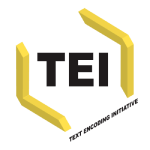LINCS will convert existing data into Linked Open Data (LOD) by extracting linked data entities and relationships from heterogeneous datasets. Tools will be created and adapted to detect entities, disambiguate or link entities, detect relationships between entities and validate the results. These tools will become a part of the LINCS Conversion Toolkit which will allow us to mobilize, enrich, and interlink research data.
LINCS Conversion Toolkit

CWRC-WRITER

The Canadian Writing Research Collaboratory (CWRC) has developed an in-browser XML and LOD annotation editor (CWRC-Writer) for use by individual scholars and for collaborative scholarly editing projects that require a lightweight online editing environment. The editor builds on the TinyMCE HTML editor and incorporates additional services like document storage, NERVE (Named Entity and Vetting Environment) and entity lookups. A stand-alone, containerized version of CWRC-Writer that uses GitHub for storage is available for anyone's use. CWRC-Writer is also integrated with the CWRC Research Environment; other versions of the tool are running separately on servers in Germany and the United States. The codebase for CWRC-Writer and its connected services is retrievable HERE.
NERVE
NERVE (Named Entity Recognition Vetting Environment) is a web service that allows you to upload an XML document, run Stan- ford NER to recognize entities, and look up and add URIs to new or pre-existing enti- ties. The current version is available via CWRC-Writer and supports most major TEI (Text Encoding Initiative) schema customi- zations, along with the Orlando and CWRC (Canadian Writing Research Collaboratory) schemas.
NSSI

NSSI (NERVE Secure Scalable Infrastructure) is an extensible application for managing data processing workflows needed by NERVE. It comes with a collection of mod- ules that implement content extraction, entity recognition, and entity linking. New services for other kinds of data conversion can be added modularly to the application. One such service will allow you to provide large sets of structured bibliographic data and quickly receive back the most likely entity matches from an authority file.

TEI
The University of Ottawa team is working on tools to find entities in TEI documents (via the LINCS NSSI reconciliation service), and insert URIs for those entities into the TEI markup for use in contributors’ own projects or within LINCS. The team is also customizing Mainz’s Digitale Akademie’s XTriples tool, to allow contributors to upload their TEI and create a LINCS-compatible CIDOC-CRM representation of those elements and their relationships for ingestion into the LINCS triplestore.
Find out more!

BigDIVA
Big Data Infrastructure Visualization Application (BigDIVA) is a dynamic environment for browsing, searching, and interacting with the ARC (Advanced Research Consortium) catalogue. This interface allows users to view all their search results at once rather than paging through endless lists of returns and hoping the search engine has put the most relevant items towards the top.

